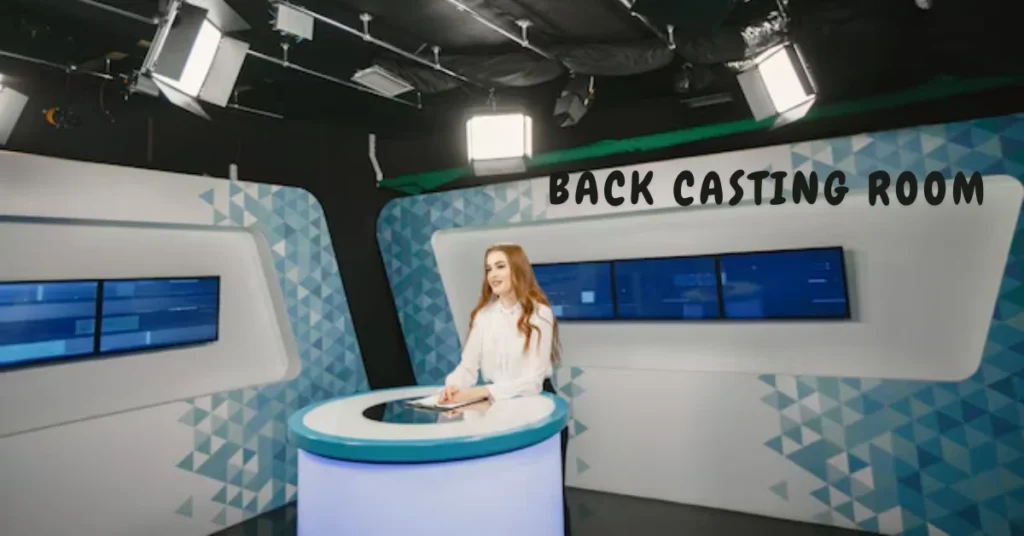Introduction to the Back Casting Room
Imagine stepping into a room where the future unfolds before you. Welcome to the Back Casting Room, a groundbreaking concept that turns conventional planning on its head. Instead of predicting what lies ahead based on trends and projections, this innovative approach allows you to look backward from your desired outcome. It’s like having a treasure map that leads directly to your goals by tracing back the steps needed to get there.
As we navigate through life’s uncertainties, effective planning is more crucial than ever. The Back Casting Room offers a fresh perspective—one that empowers individuals and organizations alike to take control of their futures with clarity and intention. Whether you’re an entrepreneur seeking growth or someone looking for personal development, this method invites you into an exciting journey of self-discovery and strategic thinking. Let’s dive deeper into how back casting can reshape your planning process and open new doors for success!
What is Back Casting and How Does it Differ from Forecasting?
Back casting is a strategic planning tool that starts with envisioning a desired future. Instead of projecting forward, it works backward from that ideal scenario to identify the steps needed to reach it.
This method contrasts sharply with forecasting, which relies on analyzing current trends and making predictions about what will happen next. Forecasting often focuses on probabilities based on historical data, leaving room for uncertainty.
With back casting, you create a clear vision first. From there, you chart your path by considering potential obstacles and necessary actions. This approach encourages proactive thinking rather than reactive decision-making.
By starting at your end goal and working backward, back casting offers clarity in complex situations. It empowers individuals and organizations to align their resources effectively toward achieving specific objectives without getting lost in ambiguous forecasts.
The Benefits of Using Back Casting for Future Planning
Back casting offers a fresh perspective on planning for the future. Instead of predicting outcomes, it works backward from desired results. This approach encourages clarity and focus on what truly matters.
Using back casting allows individuals and organizations to establish concrete goals. By envisioning a successful outcome, you can identify essential steps needed to reach that point. This clear pathway reduces uncertainty in decision-making.
Additionally, back casting fosters creativity. It invites innovative thinking about how to achieve ambitious targets rather than being confined by current limitations.
The process also enhances collaboration among team members. Everyone shares their vision and contributes ideas towards achieving collective objectives, promoting unity and commitment.
This method helps prioritize actions based on long-term aspirations rather than short-term pressures or trends. Emphasizing meaningful achievements creates a more fulfilling planning experience.
Step-by-Step Guide to Using the Back Casting Room
To utilize the Back Casting Room effectively, start by gathering your team. Collaboration enhances creativity and insight.
Next, define your end goal. What do you want to achieve? Be specific about the desired outcome.
Then, visualize that future state. Picture where you want to be in five or ten years. This clarity helps shape the path backward.
After that, identify key milestones along the way. Break down larger goals into manageable steps that lead to success.
Once you’ve established milestones, analyze potential obstacles. Consider what could hinder progress and how to navigate these challenges proactively.
Develop a timeline for each step with accountability measures in place. Regular check-ins will keep everyone aligned and motivated toward achieving your ultimate vision.
Real Life Success Stories of Using Back Casting in Planning
Many organizations have embraced the back casting room approach to achieve remarkable outcomes. One inspiring example is a tech startup that leveraged this method to design its product roadmap. By envisioning their ideal future product, they meticulously mapped backward to identify critical milestones.
Another success story comes from an environmental non-profit. They used back casting to create sustainable community initiatives. By picturing a thriving ecosystem in ten years, they developed actionable steps that garnered local support and funding.
In education, a school district applied back casting for curriculum planning. They envisioned graduates equipped with essential skills and crafted programs to bridge gaps effectively.
These examples illustrate how diverse sectors can harness the power of back casting rooms, transforming their visions into clear pathways toward success without losing sight of their ultimate goals. Each journey showcases creativity and strategic thinking in action, paving the way for innovative solutions and tangible results.
Alternative Methods for Future Planning
When it comes to planning for the future, several alternative methods can complement or even replace traditional approaches. Scenario planning is one option that encourages thinking about multiple futures based on varying assumptions. This method helps teams prepare for uncertainty.
Mind mapping is another engaging technique. It allows individuals to visualize their ideas and goals in a dynamic way. By creating connections between thoughts, you can uncover new pathways and perspectives.
SWOT analysis—assessing strengths, weaknesses, opportunities, and threats—provides a structured framework for evaluating personal or organizational objectives. This systematic approach brings clarity amid complexity.
Agile planning embraces flexibility by allowing plans to evolve as circumstances change. Regular check-ins help adapt strategies in real time.
Each of these methods offers unique advantages that cater to different needs and preferences in future planning scenarios. Exploring them could enhance your decision-making process significantly.
Conclusion: Why You Should Consider Using the Back Casting Room for Your Future Plans
The Back Casting Room offers a fresh perspective on planning for the future. By shifting your focus from predicting outcomes to working backward from desired goals, you can create actionable pathways that lead to success. This method fosters clarity and motivation, allowing you to visualize not just what you want but how to achieve it.
Many individuals and organizations have already experienced the transformative power of back casting. They’ve set concrete, achievable milestones by identifying their ultimate objectives first. The process encourages critical thinking and innovation while minimizing the uncertainty often associated with traditional forecasting methods.
If you’re tired of feeling lost in conventional planning approaches or overwhelmed by unpredictable trends, consider exploring the Back Casting Room. It could be just what you need to navigate your path forward with confidence and purpose. Embrace this innovative technique—your future plans might just take on new life through its unique lens.
FAQs
What is “Back Casting Room”?
The Back Casting Room is a unique approach to planning where you work backward from your desired outcome to create actionable steps toward success.
How is back casting different from forecasting?
Back casting starts with a clear vision of your ideal future and works backward, while forecasting predicts outcomes based on current trends and data.
What are the benefits of using back casting for planning?
Back casting provides clarity, creativity, and proactive -making, enabling you to set clear goals, prioritize actions, and collaborate effectively.
How do I use the Back Casting Room?
Start by defining your end goal, visualize the future, identify key milestones, and develop a timeline with accountability to reach your vision.
Can back casting be used in different industries?
Yes! Back casting has been successfully used in tech startups, education, and environmental initiatives, helping diverse sectors achieve their goals strategically.







